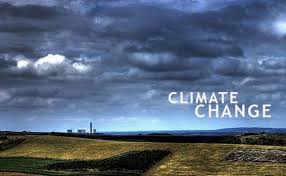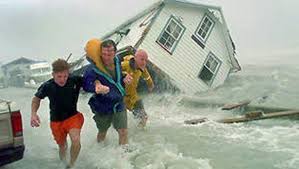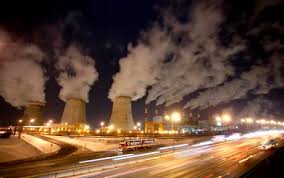http://82.98.144.185/tv/sanse/vidframe.php?video2=101111_CARE.flv&banda=700
http://82.98.144.185/tv/sanse/vidframe.php?video2=101119_BALANCE_CARE.flv&banda=700
http://www.cronicanorte.es/instituto-sanse-proyecto-europeo-cambio-climatico/10901
http://www.gentedigital.es/san-sebastian-de-los-reyes/noticia/406315/el-ies-juan-de-mairena-de-sanse-acogera-la-primera-reunion-del-programa-europeo-comenius-sobre-cambio-climatico/
COMENIUS MULTILATERAL SCHOOL PARTNERSHIP
domenica 21 novembre 2010
Visit Programme in Spain from 8th to 13th November 2010
Sunday/Monday 7th/8th November
Arrival of participants. Barajas Airport in Madrid:
France
Germany
Hungary
Italy
Poland
Portugal
Romania
Depending on the time and day of arrival guests were transferred to the hotel, the school or the families' homes in San Sebastián de los Reyes.
Monday - Free day.
Students stayed with their families and had lunch and dinner with them.
Tuesday 9th
Each student went to school with his/her Spanish colleague. Until 9:30 they attended classes with their mates
Teachers:went to school at 9:15 by a bus provided by the school.
9:30 – 11:30 Presentation of each school.
Each delegation had prepared a presentation about their city, school and other. Each work was presented by the students.
11:30 – 12:00 Pause coffee
12:00 – 14:00 Evaluation of the survey in five international groups:
14:00 – 15:30 Lunch
Students had lunch with their families. After lunch, students returned to school at 15:30.
Teachers had lunch at school with their spanish collegues who prepared a fantastic variety of traditional food. Everything was delicious.
15:30 – 18:30 There was a presentation of the work and the posters and a discussion about the results of the questionnaire
At 20:00 Teachers met to have dinner at a restaurant near the hotel. There were many spanish collegues. The food was tasty and the atmosphere warm and relaxed. The restaurant was big and original in the design.
Wednesday, 10th
Each student went to School with his/her Spanish colleague . Until 9:30 they attended classes with their mates
Teachers reached the school by the usual bus.
9:30 – 12:30 Presentation of the logos
The Logos had been displayed the day before to give everyone the possibility to see them and take a decision about the vote.
the best logo was chosen in a secret vote. The winner was one of the Logos drawn by Romanians. The Italian and Portoguese schools conquered the second place with an ex-aequo. All the logos were beautiful and all were worth to win. Anyway the Romanian logo conquered the hearth of voters.
13:00 – 14:30 Visit to the Town Hall
There was an official reception at the Town Hall at the presence of the Responsibles of Education and Environment of San Sebastian del los Reyes.
Before the meeting students had visited the Town Hall Ethnographic Museum. After the meeting also the teachers went there. Very interesting place
Arrival of participants. Barajas Airport in Madrid:
France
Germany
Hungary
Italy
Poland
Portugal
Romania
Depending on the time and day of arrival guests were transferred to the hotel, the school or the families' homes in San Sebastián de los Reyes.
Monday - Free day.
Students stayed with their families and had lunch and dinner with them.
Tuesday 9th
Each student went to school with his/her Spanish colleague. Until 9:30 they attended classes with their mates
Teachers:went to school at 9:15 by a bus provided by the school.
9:30 – 11:30 Presentation of each school.
Each delegation had prepared a presentation about their city, school and other. Each work was presented by the students.
11:30 – 12:00 Pause coffee
12:00 – 14:00 Evaluation of the survey in five international groups:
- Shopping and food
- waste
- energy
- water
- mobility
14:00 – 15:30 Lunch
Students had lunch with their families. After lunch, students returned to school at 15:30.
Teachers had lunch at school with their spanish collegues who prepared a fantastic variety of traditional food. Everything was delicious.
15:30 – 18:30 There was a presentation of the work and the posters and a discussion about the results of the questionnaire
At 20:00 Teachers met to have dinner at a restaurant near the hotel. There were many spanish collegues. The food was tasty and the atmosphere warm and relaxed. The restaurant was big and original in the design.
Wednesday, 10th
Each student went to School with his/her Spanish colleague . Until 9:30 they attended classes with their mates
Teachers reached the school by the usual bus.
9:30 – 12:30 Presentation of the logos
The Logos had been displayed the day before to give everyone the possibility to see them and take a decision about the vote.
the best logo was chosen in a secret vote. The winner was one of the Logos drawn by Romanians. The Italian and Portoguese schools conquered the second place with an ex-aequo. All the logos were beautiful and all were worth to win. Anyway the Romanian logo conquered the hearth of voters.
13:00 – 14:30 Visit to the Town Hall
There was an official reception at the Town Hall at the presence of the Responsibles of Education and Environment of San Sebastian del los Reyes.
Before the meeting students had visited the Town Hall Ethnographic Museum. After the meeting also the teachers went there. Very interesting place
14:30 – 16:00 Teachers had lunch at a restaurant near the Town Hall. Among the guests there were some national responsibles of Comenius programme in Spain.
In the morning students and teachers of Care comenius project went to the Cento depoliportivo di San Sebastian to discuss about the results of questionnaires and they presented the products of the workshops of the previous days.
In the late afternoon all the delegations visited the Cosmocaixa, avery interesting museum of science. The visit culminated with the vision of a 3D film in the Planetarium.
In the late afternoon all the delegations visited the Cosmocaixa, avery interesting museum of science. The visit culminated with the vision of a 3D film in the Planetarium.
Outside the museum our students expressed their satisfaction for the visit.
Friday, 12th
In the morning the foreigner delegations, with two spanish teachers went to Madrid for a sightseeing tour of the city on the famous Madrid Vision Coach.
After the tour the Italian group went to the National Museum "Reyna Sofia" where the could admire the most important painings by Mirò, Dalì and Picasso. They had the great chance to see the Guernica (Picasso).
Then went to Museo del Jamon for a tradition lunch. They had Spanish ham and cheese, paella and "lentijas" with spanish sausages. Gorgeous!!!!
sabato 20 novembre 2010
lunedì 11 ottobre 2010
Questionnaire on Ecological Awareness
This questionnaire on ecological awareness was done within the framework of Comenius Multilateral School Partnerships "Care for our Climate"
Dear Student,
Check your ecological awareness. Do you live in harmony with the environment? You can choose more than one answer. Even though the survey is anonymous, we would like you to give honest answers.
Dear Student,
Check your ecological awareness. Do you live in harmony with the environment? You can choose more than one answer. Even though the survey is anonymous, we would like you to give honest answers.
1. Which gases are responsible for the greenhouse effect?
- oxygen
- methane
- carbon dioxide
- nitrogen
- 8-14 ºC
- 1-7 ºC
- 15-20 ºC
- Yes, they can be the cause of many disorders and diseases.
- No.
- I don't know.
- glass bottle
- aluminium can
- plastic disposable bottle
- carton
- others
- paper bag
- plastic disposable bag
- bag made of natural fabric
- bag made of synthetic fabric
- reusable plastic bag
- wicker basket
- other
- plastic
- glass
- paper
- aluminium cans
- organic waste
- batteries, medicine, paint
- none of those mentioned above
- no ecological awareness
- lack of will
- lack of special containers for waste products
- dustbins are emptied too rarely
- all the suggested answers
- others
- reusable ones
- regular ones
- you have a shower instead of a bath
- you close the tap while brushing your teeth
- you seal up the the leaking tap
- you use a dishwasher
- you wash the dishes in the sink but not with running water
- you do not follow those rules
10. How do you save energy daily?
- you turn the lights off in empty rooms
- you do not leave the electrical equipment on stand-by
- you keep optimum temperature indoors both in winter and in summer
- you boil only as much water as you need to use
- you use energy-saving lamps
- your computer is not on 12 hours daily
- you do not follow those rules
11. Do you ride a bike instead of going by car whenever possible?
- yes
- no
12. Where do you go on holiday?
- within your own country
- to European countries
- to countries outside Europe
- locally grown food
- fast food
- meat
- vegetarian food
giovedì 30 settembre 2010
CLIMATE CHANGE: WHAT EUROPE HAS BEEN DOING?
Climate change is one of the gravest challenges facing humanity. The EU is working for a global agreement to reduce emissions of greenhouse gases and is leading the way by taking bold action of its own. In a landmark decision in December 2008, EU leaders approved a comprehensive package of emission-cutting measures. The plan aims to reduce greenhouse gases at least 20% by 2020 (compared with 1990 levels), raise renewable energy's share of the market to 20% and cut overall energy consumption by 20% (compared with projected trends). Within the drive for more renewable energy, it was agreed that 10% of fuel for transport should come from bio fuels, electricity or hydrogen.
Emissions trading
A cornerstone of the EU’s climate change strategy, the emissions trading system rewards companies that reduce their CO2 emissions and penalizes those that exceed limits.
Introduced in 2005, the scheme takes in about 12,000 factories and plants responsible for about half the EU’s emissions of CO2, the main gas blamed for global warming.
Under the system, EU governments set limits on the amount of carbon dioxide emitted by energyintensive industries like power generation and steel and cement makers. If these businesses want to emit more CO2 than their quota, they have to buy spare permits from more efficient companies.
In the future, more industries will be subject to quotas, including airlines and petrochemical companies. EU countries will also be able to offset emissions by buying credits from projects to reduce CO2 in non-EU countries.
Effects of Climate Change Today

Have you ever taken your temperature to see if you are getting sick? Scientists have been taking the Earth's temperature and have found that it is getting warmer. During the past 100 years, the Earth's temperature has risen more than half a degree Celsius (or about one degree Fahrenheit). This may not sound like very much but it is changing our world. Here are some effects of global warming that scientists see happening now.
SEA LEVEL IS RISING
During the 20th century, sea level rose about 15 cm (6 inches) due to melting seawater. It could rise much more than that in the next 100 years.
ARCTIC SEA ICE IS MELTING
The summer thickness of sea ice is about half of what it was in 1950. This is causing the Arctic to warm up faster.
THE OCEAN IS WARMING
Warmer waters in the shallow oceans make coral reefs less healthy. About a quarter of the world's coral reefs have died in the last few decades.
MORE RAIN CAUSES FLOODING
Warmer temperatures have caused more intense rainfall in some places. This can cause flooding.
ECOSYSTEMS ARE CHANGING
As temperatures warm, animals and plants may either look for a cooler place to live or die. Species that are vulnerable include endangered species, coral reefs and polar animals. Warming has also caused changes in the timing of spring events and the length of the growing season.
Hurricanes have changed in frequency and strength.There is evidence that the number of intense hurricanes has increased in the Atlantic since 1970. Scientists continue to study whether climate is the cause.
More frequent heat waves It is likely that heat waves have become more common in more areas of the world.
Seawater is becoming more acidic When carbon dioxide, a greenhouse gas, gets into the oceans, it makes the water more acidic. This could impact coral reefs and other marine life.
mercoledì 29 settembre 2010
lunedì 30 agosto 2010
The Preparatory Visit in Germany
All the Partners met in Delmenhorst (Germany) to define the objectives, plan the activities and discuss about the results in order to fill in the application form.
It has been a great success: all the participants are in.
It has been a great success: all the participants are in.
Iscriviti a:
Post (Atom)








.jpg)





